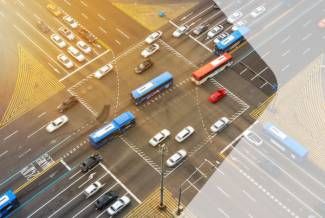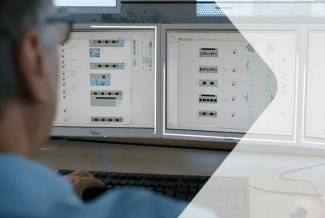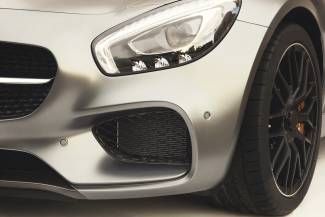The smart intersection: roads of the future
The intelligent or smart intersection is an approach to ensure greater safety and efficiency at important junctions in road traffic. This is because long waiting times, traffic jams and accidents often occur in inner-city areas in general and at junctions in particular. But what exactly are smart junctions? What advantages and challenges can we expect? And when will they finally become a reality?
On this page, you can find out all the important information about smart junctions - and what makes them such an important building block for the mobility of the future.
Intelligent or smart intersection - what is it?
No matter what you call it, the core task of the intelligent intersection always remains the same: it is an intelligent traffic system designed to facilitate the safe and efficient transfer of people between intersecting roads.
What exactly is intelligent about it?
Quite simply, intelligent traffic systems are solutions that use new technologies to control traffic. By using sensors, cameras, environment models and data analysis, traffic situations are checked, evaluated and managed accordingly - with the aim of improving general mobility and making it fit for the future.
The Smart Intersection has the same goal - it will specifically help to improve flow of traffic at junctions and prevent accidents. The environment is analyzed in real time and the resulting information is forwarded to the vehicles. The intersection basically thinks for itself and helps all road users to cross it as efficiently as possible.
Find out more: Intelligent traffic systems
How do Smart Intersections work?
The basic idea behind an intelligent intersection is that not only cars recognize and react to their surroundings, but also the intersection itself. The result is adaptive traffic control that reacts to real conditions and forwards the corresponding output to road users. By adapting to the respective situation in real time, traffic can be made more efficient and safer.
But how exactly will smart junctions work?
- Advanced technologies such as lidar sensors and radar-capable cameras are used to analyze the entire intersection area.
- The intersection is thus recorded, including all road users (i.e. cyclists and pedestrians as well as motorized vehicles) and their respective movements.
- The recorded information is converted into a 3D model of the surrounding area and evaluated, enabling the system to analyze the current situation in real time.
- On the one hand, this data is used to control the traffic lights and adapt them to the traffic conditions.
- On the other hand, the information is also forwarded to all relevant vehicles in the vicinity, which can receive it using appropriate Car2x technology.
- This means that some situations can be avoided from the outset by the intervention of the system.
Car2x communication refers to technologies that enable vehicles to exchange information in real time. Road users are thus networked with the surrounding infrastructure.
What are the benefits of smart intersections?
Intersections are an important part of the nervous system of our modern society – of course, because after all, you have to cross them to get from A to B. This is where several streams of vehicles meet, which often leads to delays and traffic jams, especially at peak times. Particularly in urban centers, the increase in everyday road traffic is becoming more and more of a challenge for everyone involved.
Daily road traffic will not necessarily become any easier in the future: According to forecasts, passenger traffic is set to increase by 13 percent by 2051. Without innovative new developments to control it, ever-increasing traffic chaos is as good as pre-programmed.
Intelligent intersections are an obvious solution, as they use information and communication technologies to optimize road traffic. They are a basic building block for the mobility of the future, as they have the potential to make traffic routes more efficient, environmentally friendly and safer.
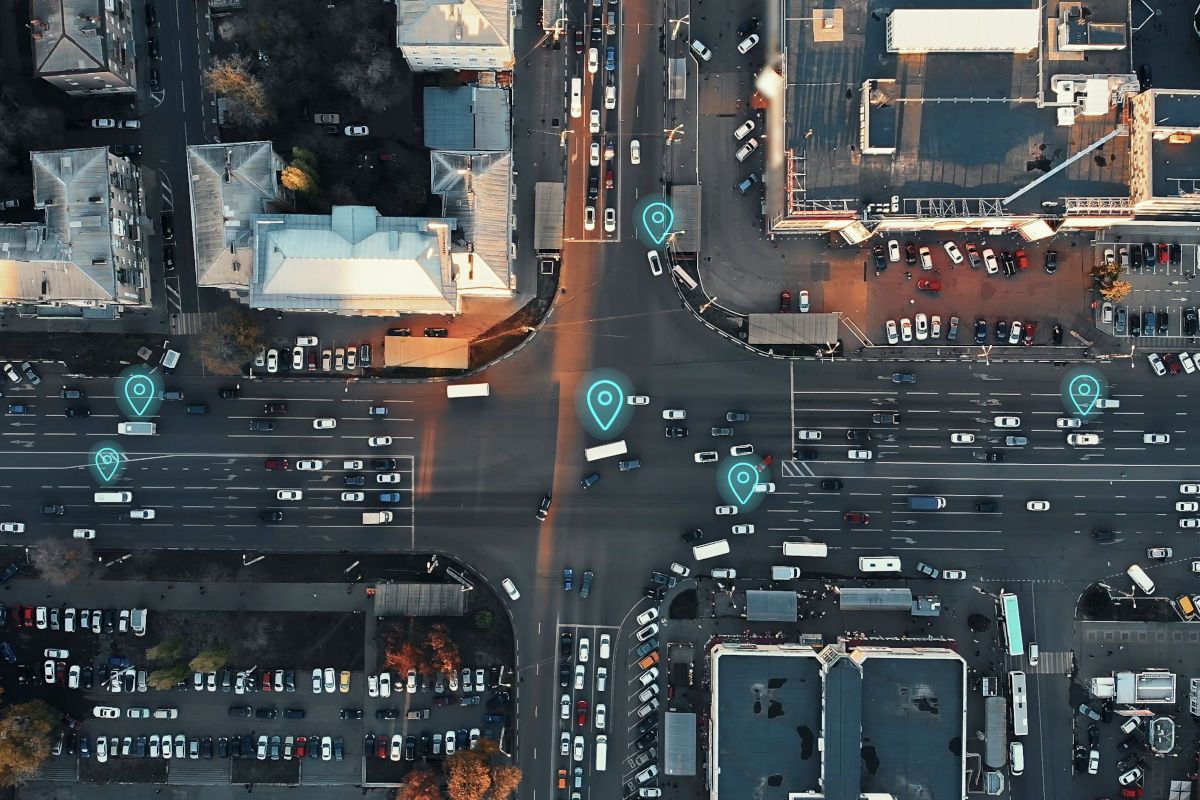
Improved traffic efficiency
Busy and large junctions are usually controlled using preset traffic light cycles – the traffic lights simply switch after a fixed period of time. In theory, this means that the flow of traffic can always continue smoothly. In practice, however, this often does not work.
At junctions with preset traffic light cycles, longer waiting times are usually to be expected when there is heavy traffic. This is because, especially at peak times, there are often more vehicles at the junction than can leave it in one go. This increases the risk of traffic jams.
Intelligent junctions could help to make traffic more efficient in the future. They could adapt the traffic lights to the current traffic conditions in real time and optimize the flow of traffic by communicating directly with road users - for example, by providing up-to-date information on accidents to enable traffic to be diverted immediately.
This shortens transit times, reduces idling and increases traffic flow.
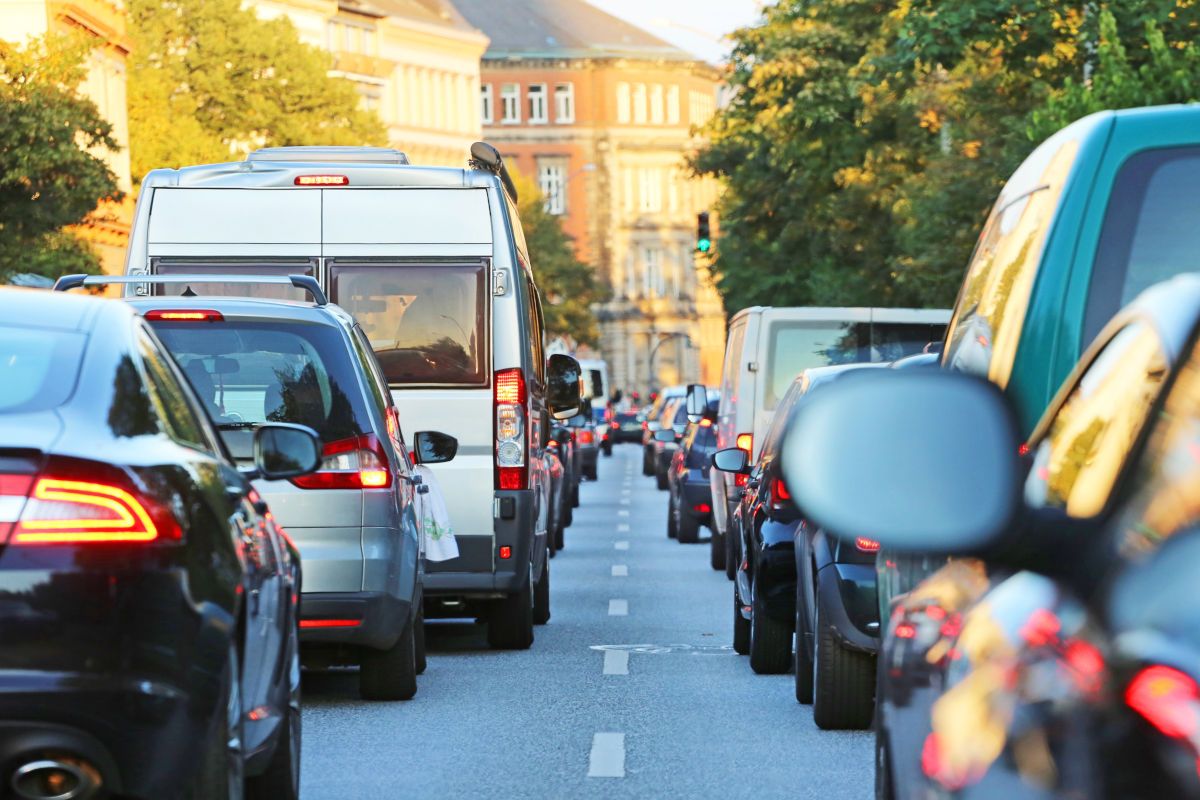
Reduction of CO₂ emissions
Optimizing the flow of traffic would of course also result in shorter waiting times for road users - and that in turn would mean fewer vehicles with running combustion engines waiting in front of red lights for the signal to move on.
Intelligent intersections are an important step towards reducing emissions in road traffic and enabling vehicles to use energy efficiently.
After all, the more efficient the traffic, the less waiting time there is for road users - and the fewer engines are left running.

Prevention of accidents
Intelligent junctions are also the key to greater road safety. This is because junctions are a hotspot for accidents – from minor rear-end collisions to more extreme situations. An intelligent intersection could help to prevent many of these accidents.
In the future, for example, potential hazards could be detected by the smart intersection and forwarded directly to the drivers concerned.
This is because it is designed to perceive everything in the intersection environment – even in the blind spot of the driver's perspective or the turning assistant. This could reduce the risk of crossing accidents.
According to the ADAC, over a quarter (around 27%) of all accidents in Germany are turning and crossing accidents. In 2021 alone, a total of 305 deaths occurred as a result of these accidents.
Concrete Solutions by SWARCO
Challenges for smart intersections
Intelligent intersections are an important step towards the mobility of the future, but they still face a number of challenges that need to be overcome. These include, among other things:
Technical complexity: The implementation and operation of intelligent intersections requires complex technologies and systems, some of which are still in the early stages.
Balancing the interests of road users: A particularly big challenge for smart intersections is to balance the interests and needs of different road users.
Complex traffic situations: Intelligent intersections must be able to deal with complex traffic situations. High traffic volumes, unforeseen events or irregular traffic patterns must not be an obstacle for the system.
Acceptance and training: The introduction of smart intersections requires the acceptance and cooperation of all road users. Training and education about the functionality and benefits of smart intersections is therefore important to ensure that they function smoothly.
Data protection and security: Intelligent intersections collect a large amount of traffic data - including the data of individual road users. Accordingly, functions are needed to ensure the security of this data.
Conclusion: Intelligent intersections - reality or dreams of the future?
Smart intersections are still in the development phase - an intelligent intersection that analyzes accident risks in real time and communicates them to traffic participants using Car2x technologies is therefore not yet in use. However, initial developments in this direction already exist – for example, intelligent traffic lights such as the Swarco Combia.
- Smart traffic lights that recognize pedestrians and automatically give them the opportunity to cross have been in operation in Austria for some time now.
- Germany's first intelligent traffic lights have also been tested in Hamm since July 2023.
Although these traffic lights are not yet able to communicate with each other or with road users, the technical basis for corresponding solutions is already being developed. It is therefore only a matter of time before the intelligent intersection can be used to its full extent.
Last but not least: Even if there are still some challenges ahead: Advanced technologies such as smart intersections will enable us to make more efficient and sustainable mobility a reality. Once the technical prerequisites are in place, smart intersections will ensure significantly greater efficiency, safety and resource conservation in everyday road traffic.
FAQ
An intelligent intersection is an intersection where state-of-the-art technologies and traffic control systems are used to make the flow of traffic more efficient and safer. This minimizes waiting times and prevents accidents.
An intelligent intersection is designed to work by integrating various technologies such as lidar sensors, cameras and computer algorithms. It collects and analyzes real-time traffic data in order to dynamically control the flow of traffic. Based on this data, the traffic lights are optimized to direct traffic more efficiently and reduce congestion. In future, intelligent intersections will also use Car2x Communication to pass on information directly to road users.
Eine intelligente Kreuzung könnte durch die Analyse der aktuellen Situation und die Kommunikation mit Verkehrsteilnehmern den Verkehrsfluss optimieren. Das wiederum hätte eine gesteigerte Sicherheit sowie reduzierte Schadstoff-Emissionen zur Folge.
An intelligent intersection could optimize traffic flow by analysing the current situation and communicating with road users. This in turn would result in increased safety and reduced emissions.
No fully functional intelligent intersection is currently in use. However, there are already initial steps in this direction, such as intelligent traffic lights. Some of the technologies required for a pure smart intersection are still in the development phase.
Bilder: © DedMityay – stock.adobe.com; © Kara – stock.adobe.com; © Room 76 Photography – stock.adobe.com

STAY INFORMED
GET OUR NEWSLETTER!
Subscribe to our ITS / Smart Mobility Newsletter and receive regular updates on trends, developments, solutions and events.
